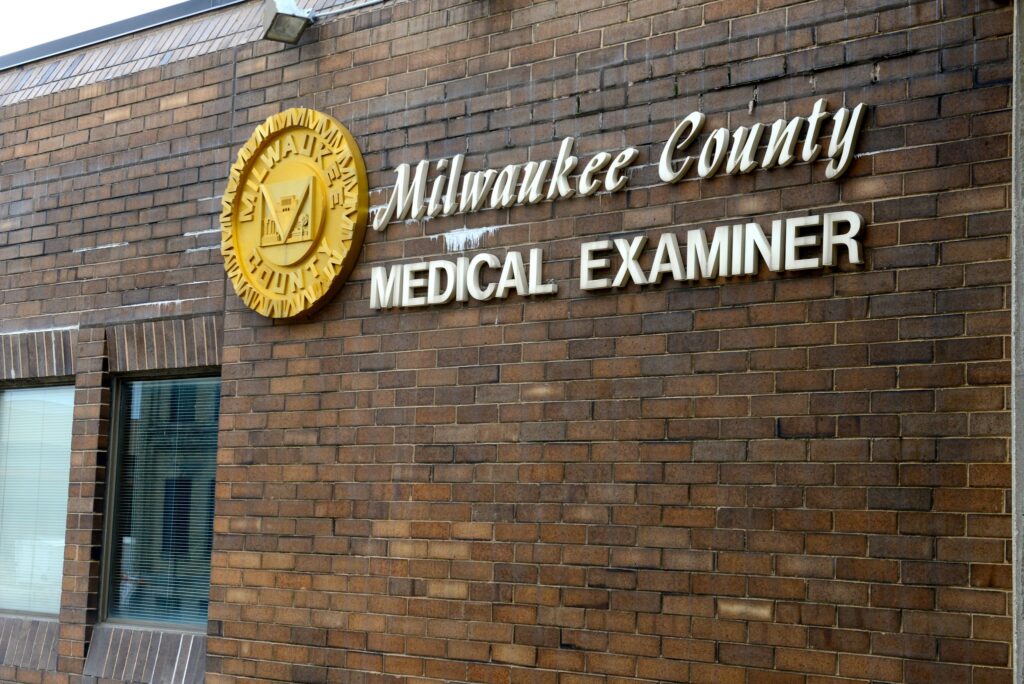Homeless Deaths Rising Significantly in Milwaukee
Substance abuse contributing to 147% rise since 2018.

According to records requested from the Milwaukee County Medical Examiner’s Office, the number of deaths of homeless people in 2018 was 21. By the end of 2021, the number reached 52, a 147% increase. NNS file photo.
There has been a significant increase in deaths over the past several years among people who don’t have a regular place to live but fail to meet the standard definition of homelessness.
According to records requested from the Milwaukee County Medical Examiner’s Office, the number of deaths of homeless people in 2018 was 21. By the end of 2021, the number reached 52, a 147% increase.
The leading cause: Substance abuse, particularly involving opioids and fentanyl.
Two people whom Street Angels has worked with recently have died.
“We just had a gentleman murdered downtown,” said Dan Grellinger, homeless outreach specialist at Street Angels. “It shook people up.”
The Medical Examiner’s Office provided figures for January and February that indicate the county is on pace to match or exceed the number of homeless deaths in 2021. The office did not respond to requests for data for subsequent months of 2022.
The lack of standardized methods for determining who is homeless at the time of death creates challenges.
Karen Domagalski, operations manager for the Medical Examiner’s Office, suggested the data her office has at its disposal underrepresents the number of people who have died while homeless.
She said in an email that if a person “dies at a shelter, the address of the shelter is occasionally recorded as the decedent’s address so it would not be readily apparent the decedent was actually homeless.
Precisely tracking this particular subsection of people also is tricky for homeless service providers. Most federal funding only goes to assist people who are either “literally” or “chronically” homeless, as defined by the U.S. Department of Housing and Urban Development, or HUD.
This identifies people who are living on the street, a “place not meant for habitation” or in a shelter on a short-term basis.
As governmental entities and nonprofits carry out the work they are funded to do, people who lack stable housing but don’t meet the technical definition of homelessness often go unseen and unserved.
HUD-funded assistance programs, for example, include four categories of homelessness: The first is for people who live in a place not meant for human habitation, in an emergency shelter, in transitional housing or who are leaving an institution where they temporarily lived; the second includes people who are losing their primary nighttime residence; the third is for families with children who face housing instability and are likely to continue in that state; and the last category includes people who are trying to leave domestic violence and have no other residence.
“There are pockets of the community who are living in the shadows of the system who are suffering,” said Eric Collins-Dyke, assistant administrator of Supportive Housing and Homeless Services at the Milwaukee County Housing Division. “We have to honor this gap in the system and this piece that we are missing. We have to look for more resources. We shouldn’t have to say that we are mandated to do something.”
Emily Kenney, director of systems change at IMPACT, the parent organization of IMPACT 211, a free helpline and online resource directory that connects residents to services, echoed this need.
“Since 2019, we have been paying more attention to those folks that are unstably housed and try to provide services beyond keeping them from coming into the homelessness systems . . . beyond what HUD funds us to do.”
Housing as the gold standard
Stable housing – both shelter and permanently subsidized housing – remains one of the most effective and recognized ways of preventing deaths of people experiencing homelessness.
Without this basic need being met, “They freeze to death. They die from heat in the summer. They have multiple health conditions … . I’m not surprised,” said Sherrie Tussler, who serves as the executive director for Hunger Task Force.
Advocates and homeless services professionals say they are aware of the lack of readily accessible shelter and housing.
Stephanie Nowak, the community intervention specialist lead for the Milwaukee County Housing Division, pointed out that those with substance abuse or mental illness often feel less accommodated by shelters, further complicating efforts to get them off the street.
“We understand why oftentimes people who are street homeless don’t want to use shelter or why that is not a good or right option for them, and we acknowledge that, and we work with them for what would be a better option,” Nowak said.
Grellinger tells people who want help finding long- term housing to expect a wait.
“We have people that we support that we’ve been through a couple winters with, or three or four years. We generally tell people – best case scenario – if you get into 211 and get into a housing program and fill out an application and find a landlord, it’s six or nine months out,” he said. “It takes a long time.”
As the city grapples with its opioid crisis, residents experiencing both homelessness and addiction need both housing and accessible treatment in order to lower their risk of preventable death.
Shelly Sarasin, the co-executive director of Street Angels, reported consistent bottlenecks in connecting people to certain drug-related resources. “Fentanyl is really present in our community. Though we have a lot of harm-reduction resources, we don’t have a lot of facilities that are easy to get into.”
Gina Allende, the health promotions manager at UMOS, said a facility catering specifically to those with opioid addiction would also be important in helping those who are seeking treatment.
The one detox clinic run by the county serves people seeking services for many different types of addiction but “when people have opioid addiction, it comes right away with withdrawals … and they are concerned they won’t get medication right away and that they are going to suffer,” she said.
Little things go a long way
There are often obstacles encountered specifically by those who are experiencing homelessness that limit their ability to access the treatment that is available.
Location is one of them.
First Step Community Recovery Center, at 2835 N. 32nd St., is the single county-funded facility that provides residential detox and MAT. MAT, or medication-assisted treatment, is the use of medications such as buprenorphine or methadone to help suppress withdrawals and limit craving.
First Step is in the North Side neighborhood of Sherman Park, so patients who live in the South Side often “don’t feel comfortable” when they find out where the facility is located, Hernandez said. “It would be a lot easier if people could just walk over there.”
Patricia Gutierrez, alcohol and drug abuse services director at IMPACT, said she understands this obstacle.
“When someone calls us, we usually ask them ‘is there someone we can call for you, is there a family member, a friend we can call for you,’” she said. “If it’s serious and life-threatening, we’re going to call an ambulance or police to see if they can take you down there. We just want to make sure the client gets there, and we use whatever avenue we can to get them there.”
Both UMOS and Street Angels regularly collaborate with the Milwaukee Fire Department via its Milwaukee Overdose Response Initiative project, or MORI, to help bridge this transportation gap. When UMOS or Street Angels staff encounter someone who wants treatment, they will call MORI to help arrange a ride.
Some good news
Despite challenges, advocates and homeless services professionals said there are two reasons to be hopeful.
The first is the $400 million in opioid settlement money Wisconsin will be receiving over the next 18 years. This money has been earmarked for prevention programs, residential treatment and MAT, among others.
Harm reduction refers to a set of practices that aim to limit the dangers involved in behaviors that pose risks to one’s health, such as drug use or sex work, rather than zero-tolerance policies. Much current work in the field of addiction has adopted such practices.
Both fentanyl test strips and naloxone are life-saving resources, and both are distributed by UMOS, Street Angels and MORI.
Milwaukee Fire Department Capt. David Polachowski, who oversees MORI, helped develop its “hope kits,” which include naloxone, CPR face shields, fentanyl testing strips, a card for Narcotics Anonymous and numbers for MORI and UMOS.
Polachowski said items like these are key in making progress.
“Our success is — are these people still alive? Because then there’s the potential for us, or anybody, to assist. That’s a win.”
‘Living in the shadows of the system’: Rise in deaths of homeless people highlight gaps in services was originally published by the Milwaukee Neighborhood News Service.


















